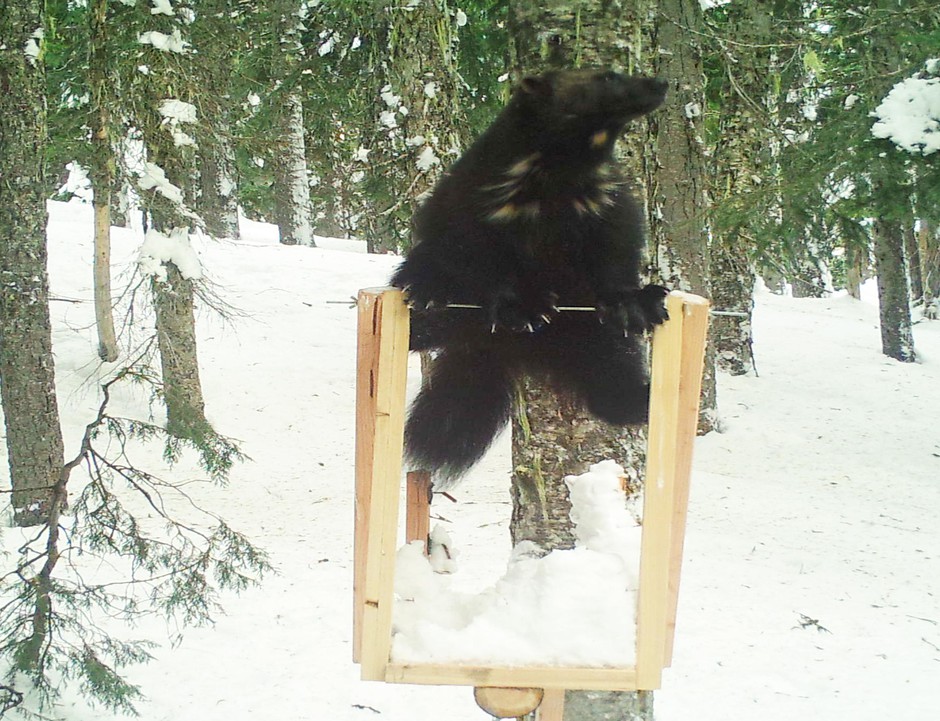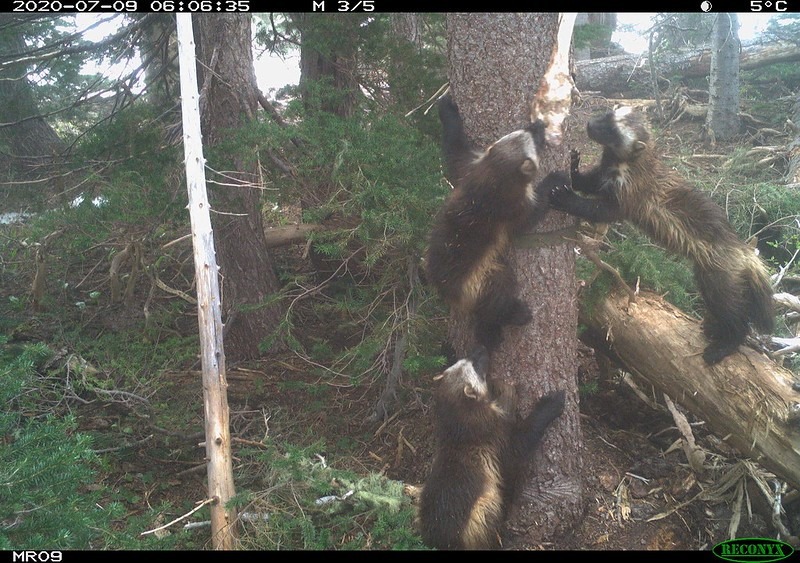
Conservation Groups Vow Challenge After Federal Decision Not To Protect Wolverines
Listen
Conservation groups are vowing to again challenge the U.S. Fish and Wildlife’s decision not to add wolverines to the Endangered Species List. The groups say wolverines are iconic species in high mountain snowy habitat, which is greatly threatened by climate change.
Ten conservation groups had requested the federal government list the elusive predators.
There are likely fewer than 300 wolverines across its habitat across the Mountain West, which includes populations in Washington, Idaho and Oregon, where 90 percent of their habitat is on federally managed lands and wilderness areas.
Dave Werntz, with Conservation Northwest, says listing the elusive wolverines would “help bring a focus to wolverine conservation.”
“It would mean better planning, better consideration and – in some places – reducing the threats that are putting the wolverine at risk of extinction,” Werntz said.
Wolverines depend on remote, snowy habitat to burrow dens in the springtime. Climate change projections show that breeding habitat is at risk, according to Timothy Preso, an attorney with environmental advocacy group Earthjustice.
“Literally, the wolverines’ snowy habitat is melting away. There are things that can be done, short of stopping climate change, to help the wolverine,” Preso said.
For example, working on reintroduction efforts in areas that appear likely to stay snowy. Preso said those types of recovery efforts have been “held up” by the lack of federal protections.
Even though wolverines are known for their ferocity in the wildlife world, they’re greatly impacted by human disturbance – activities such as roads, forestry practices and snowmobile use.
The bear-like members of the weasel family are also threatened because their numbers are mainly in small, scattered populations. That means, if disease or some other natural disaster were to strike, it could wipe out large sections of the remaining wolverines, Werntz says.
Threatened and spotted
In Oregon, wolverines are listed as a threatened species. A few years ago, a wolverine was spotted in the Wallowa Mountains in the northeastern part of the state.
“What I think that indicates, is that if we give the wolverine a chance and lend them a hand, they can recover. They are incredibly resilient, and they are very tough. But they need some help to ensure that they have a future in this country,” Werntz said.
In Washington, wolverines are candidates to be listed as threatened. A wolverine mother and her kits were recently spotted at Mount Rainier National Park. Biologists hope that wildlife crossings and underpasses will allow wolverines to travel from the state’s North Cascades to other habitat further south in the Cascades.

A mother wolverine and her kits were successfully captured on webcams in Mount Rainier National Park this spring and summer in 2020. Hikers in the park confirmed a sighted of their own in August 2020. CREDIT: National Park Service via Flickr
This wasn’t the first time wolverines were spotted in Washington’s Southern Cascades. But researchers haven’t seen signs of the first wolverines in the area in years.
In Idaho, wolverines are listed as an “Idaho Species of Greatest Conservation Need.” Idaho’s Fish and Game Department says a threatened status is not warranted because there is “the high level of uncertainty related to climate change effects on wolverines and their habitat.”
Pushed toward extinction
Wolverines were pushed toward extinction by the early 1900s, from trapping and baiting for other predators. Trapping is still allowed in Canada. When conservation groups began petitioning to list wolverines, Montana still allowed anyone to trap one wolverine, according to Timothy Preso, the Earthjustice attorney. That is no longer the case, but he worries trapping could resume in Montana.
Conservation groups first filed a petition to add wolverines to the federal Endangered Species List in 2000. In April 2016, a judge ruled the federal government had to make a decision about the wolverines’ status, but it didn’t set a deadline. The groups sued again in March 2020.
Now, the U.S. Fish and Wildlife Service says threats to wolverines aren’t as significant as scientists believed in 2013, when it proposed to list wolverines as threatened. In a news release, the service said wolverine populations “remain stable.”
“In the time since our original proposal, the science on wolverine (sic) has been greatly advanced thanks to the work of state wildlife agencies and researchers in the U.S. and around the world,” Noreen Walsh, regional director for the service, said in a statement.
The service also said wolverine populations in the lower 48 states are connected and “interact on some level” with those in Canada and Alaska. Therefore, it says, wolverines in the lower 48 do not qualify as distinct populations.
Preso says that reasoning doesn’t track. He points to other species protected under the Endangered Species Act that also have northern populations, such as bald eagles, grizzly bears and grey wolves.
“I don’t think most Americans want a future in which we are fine with writing off wildlife in the lower 48 because they still exist in Alaska,” Preso said. “That’s certainly not the vision that was enacted into law in the Endangered Species Act.”
He says the pushback against listing the wolverine under the Endangered Species Act stems from the national debate over climate change. Peer-reviewed studies show that 97 percent of actively publishing scientists agree that the warming climate is extremely likely caused by human activities.
Other species won’t fare well with climate change, from Canada Lynx also losing snowy habitat to coral facing bleaching, he said. That lack of acknowledgement is contributing to a worldwide wave of biodiversity loss, Preso says, which a UN report has called “unprecedented.”
Dave Werntz with Conservation Northwest says the Trump administration is “giving up and walking away from protecting the wolverine.”
Conservation groups say wolverine populations are indeed in trouble, and will remain so decades into the future as climate change threatens these high-elevation, snowy areas. That’s why Werntz believes it’s important to protect them now.
“When you protect the wolverine, you’re literally protecting that high country ecosystem and all of the plants and animals that depend on it,” he said.
Related Stories:
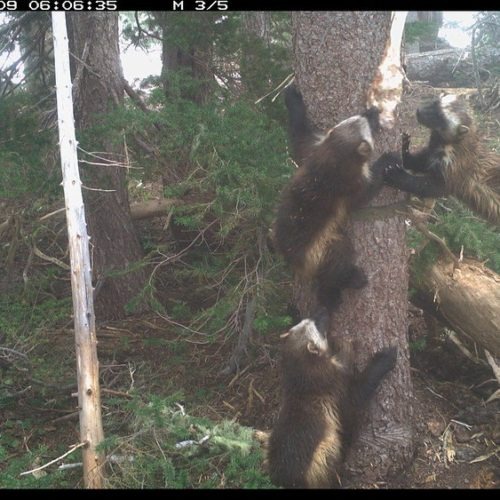
‘It’s Just So Fantastic’: Wolverine Family Seen At Mount Rainier, No Signs Yet Of Cyclops Or Beast
Conservationists are “cautiously optimistic” after discovering a mother wolverine and her kits at Mount Rainier National Park. It’s the first time a family of wolverines has called the park home in more than 100 years.
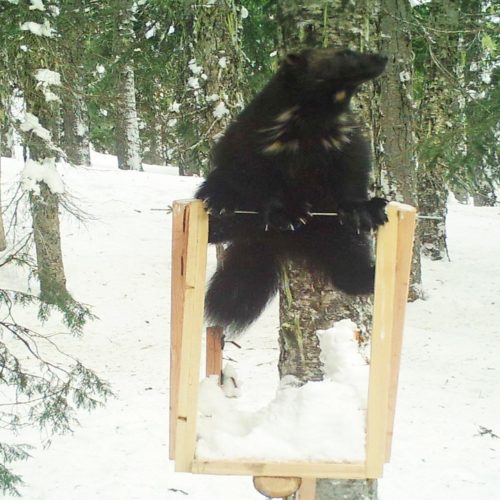
Where Have All The Wolverines Gone? Apparently Not On The Endangered Species List (Yet)
Conservation groups say the animals need to be listed as threatened under the Endangered Species Act. Ten groups want to force the federal government to protect the elusive wolverines. The groups estimate there are around 300 wolverines left, sparsely scattered across the Mountain West, including Idaho, Washington and Oregon.
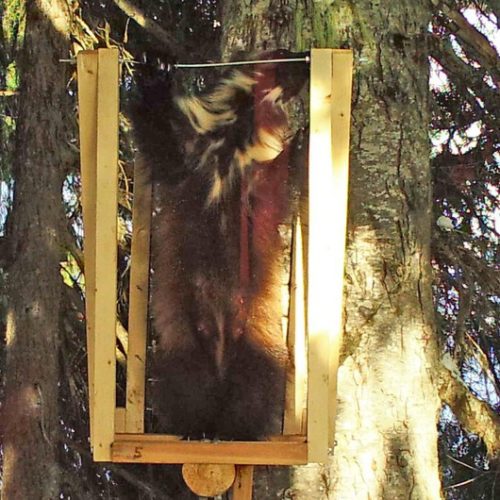
Rare Find: Wolverine Mother In Washington’s South Cascades
For the first time in recent history, a mother wolverine has been spotted in the southern part of Washington’s Cascade Mountains. The carnivores had been wiped out of the region after excessive hunting and trapping in the mid-1900s.

